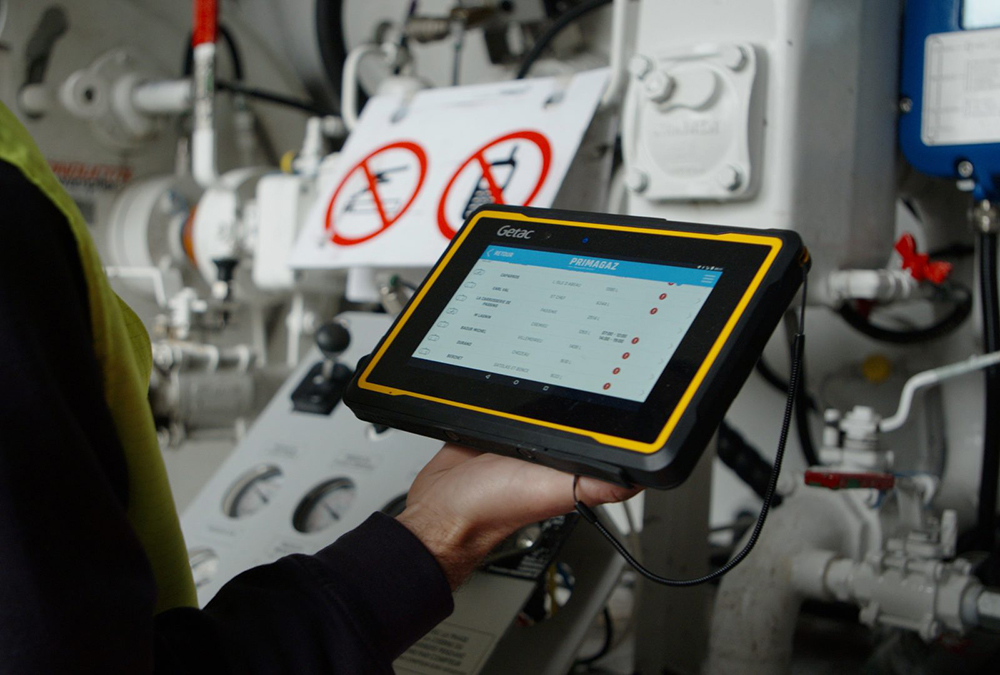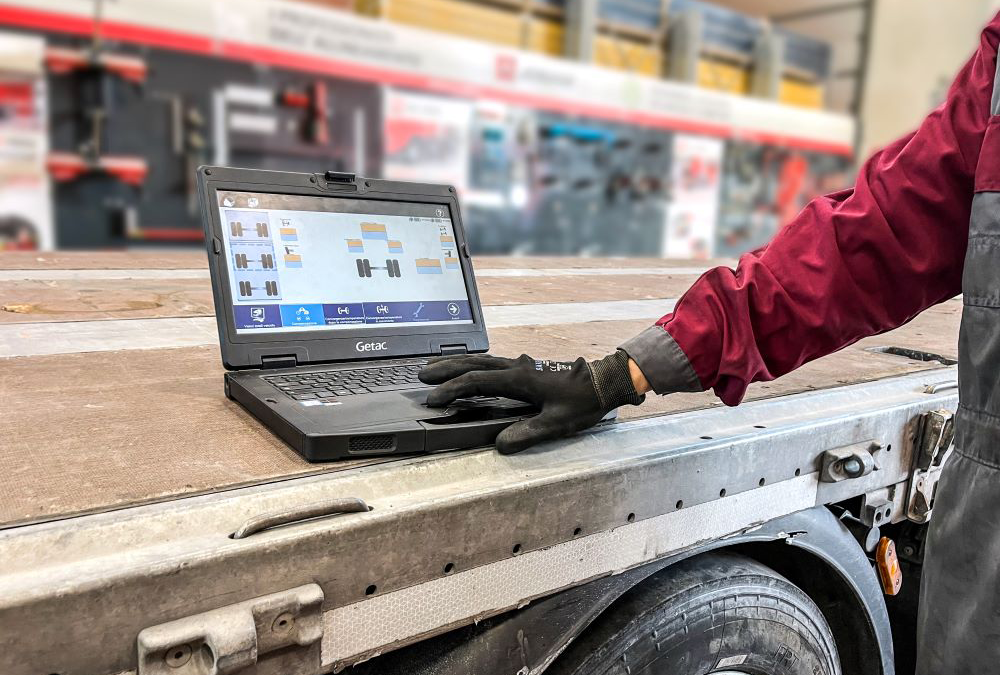
Within industries like mining, petrochemicals, and oil and gas, safety isn’t just a priority - it’s the only thing that matters. After all, a single spark could result in disaster.
Intrinsically safe devices are designed for hazardous areas just like these. They prevent explosions and provide peace of mind by keeping workers safe. Whether it’s a phone, tablet, or laptop, these tools can help you manage operations and stay in touch while withstanding even the toughest of conditions.
Come along as we break down the world of intrinsically safe tablets and phones, getting to the core of how they protect lives and keep operations running smoothly - even in high-risk zones.
What are intrinsically safe devices?
Opting for intrinsically safe devices means prioritising safety and reliability in otherwise high-risk settings. For consistent communication and operational efficiency in oil rigs, chemical plants, mines, and more, these devices are the right choice. They don’t have the capacity to produce enough energy to ignite explosive gases or vapours present, even under fault conditions.
The core principle of intrinsically safe phones and tablets is that they limit electrical and thermal energy. Through meticulous design and rigorous testing, the components and circuits produce minimal energy. Even when something doesn’t go to plan, the device remains safe to use. Designed specifically for protecting workers and preventing accidents, these devices are a must-have if you work in hazardous industries.
Understanding intrinsically safe devices within hazardous zones
Hazardous environments are categorised into different zones based on how often explosive materials are present. By understanding which zone you’re working in, you can determine the type of equipment you need to stay safe. Here’s an overview:
Zone 0
Zone 0 is the most dangerous zone as explosive gases are present at all times. Only the most robust tools known as Category 1 equipment, can be used here.
Zone 1
Places like refineries where explosive gases are likely to appear during regular operations are typically categorised as Zone 1. Here, you’ll need access to either Category 1 or Category 2 equipment.
Zone 2
Zone 2 is somewhat less hazardous because explosive gases are unlikely to be present under normal conditions. If they do show up, it’s only for a short time. You can use Category 1, 2, or 3 equipment in this zone.
Intrinsically safe devices are specifically designed to limit electrical and thermal energy, ensuring they don’t ignite anything around them - making them non-negotiables for preventing accidents in these zones. Created to be super reliable in these conditions, they won’t cause any sparks or ignition.
By using the right intrinsically safe devices for each zone, industries can protect their workers and maintain a safe working environment. Built to keep you safe when the environment gets risky, they’re reliable even if an unexpected explosive situation arises.
The types of intrinsically safe devices
By selecting the appropriate device, you can enhance safety and operational efficiency. Roaming Technologies offers a range of intrinsically safe solutions designed to meet the specific needs of these challenging settings. Let’s take a closer look at intrinsically safe tablets, laptops, and smartphones; each with its own unique features and benefits, making them suitable for different applications and environments.
Intrinsically safe tablets
Intrinsically safe tablets are rugged, durable, and built to withstand even the harshest of conditions. Typically, they feature reinforced screens, waterproof and dust proof casing, and an impressive battery life. The oil and gas, chemical processing, and mining industries (among others) rely on these tablets for data collection, safety auditing, field inspections, and real-time monitoring and communication.
The meticulously sturdy design and safety certifications of these tablets ensure that they won’t pose a risk of ignition in explosive atmospheres. To learn more, check out the range of intrinsically safe tablets available at Roaming Technologies.
Intrinsically safe phones
Smartphones with intrinsically safe properties offer the invaluable benefit of reliable communication in hazardous areas. Built to withstand extreme conditions and are certified to prevent ignition sources, their features include push-to-talk capabilities, long battery life, and durable, waterproof designs.
These phones are perfect for industries like oil and gas, mining, and chemical processing, where seamless communication is vital for not only efficiency but safety. Whether it be for coordination during emergency response, safety checks, or just routine comms, their robust and meticulously crafted design allows them to be used without posting any risk of ignition.
For more options, browse the intrinsically safe smartphones available at Roaming Technologies.
Intrinsically safe laptops
Intrinsically safe laptops combine the functionality you know and love in a regular laptop with the safety needed in hazardous environments. These devices are essential for complex data analysis and reporting, managing operational systems, controlling processes, ensuring compliance with safety standards, and running industry-specific software.
Designed to prevent any ignition sources, they are safe for use in any sector, including oil and gas, chemical processing, and mining.

Choosing the right intrinsically safe device
Here’s a guide to help you choose the best device to ensure your team’s safety in hazardous environments, according to your needs.
Some key factors to consider:
- Ensure the device is durable enough to withstand harsh conditions. Look for rugged designs certified for shock, vibration, and extreme temperatures
- Opt for devices with a long battery life to maintain continuous operation without frequent recharging and disruptions
- Your new device should integrate seamlessly with other safety systems, like protective cases and communication tools
- Verify the device is certified for the specific hazardous zone it will be used in. Look for certifications like ATEX (ATmosphères EXplosibles), IECEx (International Electrotechnical Commission System for Certification to Standards Relating to Equipment for Use in Explosive Atmospheres), or UL (Underwriters Laboratories)
- Select devices that are user-friendly and offer necessary functionalities, like simple interfaces, adequate processing power, and reliable connectivity
Be sure to:
- Assess your environment to understand zone requirements and choose compliant devices
- Consult with experienced suppliers for tailored recommendations
- Test devices in controlled environments to ensure they meet operational needs
- Plan for regular maintenance to ensure ongoing safety and functionality
Careful consideration will empower you to select the right intrinsically safe devices, ensuring safety and efficiency in hazardous environments.
Leadership and education in hazardous areas
Strong leadership and continuous education are important in every workplace, but in hazardous settings, it’s on a whole new level - because people’s safety is in your hands.
Leaders are vital in enforcing safety protocols and making sure equipment is used correctly. When leaders focus on safety and invest in continuous learning, they protect their employees and boost overall efficiency.
Reducing the risk of accidents in risky areas involves:
- Prioritising safety in all operations
- Providing regular training on the use and maintenance of intrinsically safe devices to keep everyone updated with the latest practices and technology
- Encouraging a culture where everyone shares responsibility
- Consistently monitoring and enforcing safety protocols, especially those involving these tools
Implementing intrinsically safe devices is a significant step towards enhancing safety, and one you’ll never regret. Ensuring everyone is well-trained in the technology creates a safer, more productive work environment for all.
How to maintain intrinsically safe devices
To ensure your devices keep operating at their best, it’s important to inspect and maintain them. The good news is that it can be done in a few simple steps:
- Inspect your device for any signs of wear and tear like damage to casings, screens, or connectors that could compromise safety
- Check the battery is holding a charge and is functioning correctly. Replace any under-performing batteries to avoid unexpected failures.
- Keep the software updated to ensure it meets the latest safety standards and incorporates the newest features
By prioritising the maintenance of intrinsically safe devices, you can extend their lifespan, enhance their performance, and most importantly, allow them to continue protecting workers.
Final thoughts on intrinsically safe phones and tablets
If you’re no stranger to working in hazardous environments, intrinsically safe devices can be a real lifesaver (literally). Not only do they keep the lines of communication open and keep operations running like a dream, but most importantly, they prevent accidents and allow everyone to get home safely.
We hope you’ve found this deep dive useful and now have a better understanding of what they are, how they work, and how to choose the right device for your situation. Always remember that safety begins with the right tools and proper education.
At Roaming Technologies, we pride ourselves on our expert advice and support in the world of intrinsically safe tablets and phones, Check out our range of devices, and if you have any questions, reach out to the friendly team today. If you’d prefer to give us a call, our number is 1300 131 933.